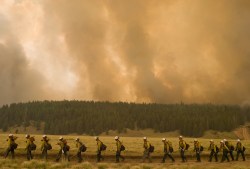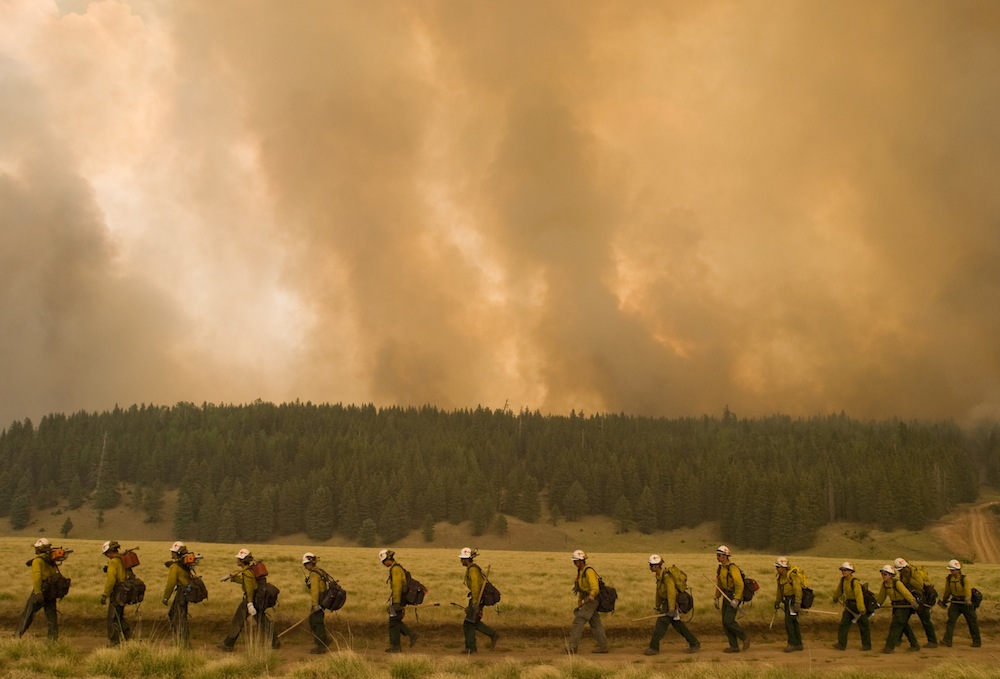
lasconchasfire3Tar ball central.
We’ve discussed at length how global warming can make wildfires worse. But here’s some more bad news: New research suggests that the fires themselves could be worsening global warming.
Forest fires release carbon from burned trees and leaves into the atmosphere. Some of that carbon is released as carbon dioxide, the chief greenhouse gas. But a lot of it is spewed into the air as soot and clumps of black carbon known as tar balls.
Soot doesn’t necessarily warm the globe — some if it can actually reflect heat from the sun back out to space. But tar balls warm the planet because they act like tiny heat traps, absorbing the sun’s rays.
Most climate models have assumed that the climate-warming and climate-cooling effects of soot and tar balls produced from wildfires more or less cancel each other out. But a new study published in the journal Nature Communications finds flaws with that assumption.
The researchers wanted to know what mixtures of soot and tar balls are being produced by American wildfires. So they used electron microscopes to study thousands of tiny particles produced by the 2011 Las Conchas fire, which at the time was the largest in New Mexico’s history.
They were surprised to discover that most of the particles were tar balls: For every 10 tar balls, they found just one soot particle.
From an article published by Los Alamos National Laboratory:
“We’ve found that substances resembling tar balls dominate, and even the soot is coated by organics that focus sunlight,” said senior laboratory scientist Manvendra Dubey. “Both components can potentially increase climate warming by increased light absorption.”
The Las Conchas fire emissions findings underscore the need to provide a framework to include realistic representation of carbonaceous aerosols in climate models, the researchers say. They suggest that fire emissions could contribute a lot more to the observed climate warming than current estimates show.
“The fact that we are experiencing more fires and that climate change may increase fire frequency underscores the need to include these specialized particles in the computer models, and our results show how this can be done,” Dubey said.




